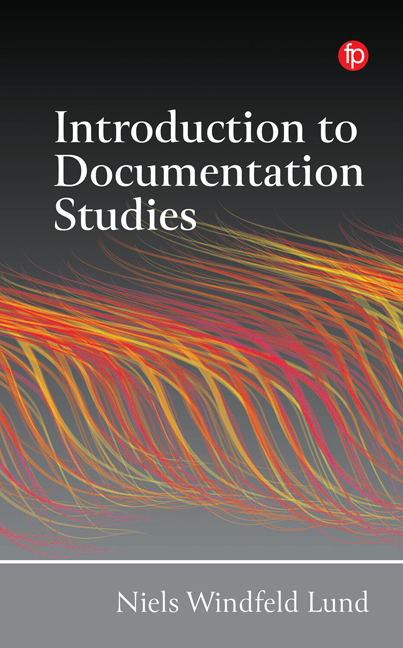 Introduction to Documentation Studies
Introduction to Documentation Studies 5 - Literature: ‘Indian Camp’ – a Short Story by Ernest Hemingway
Published online by Cambridge University Press: 28 March 2024
Summary
Introduction
Young Nick Adams is crossing a lake in a rowboat together with his father, his uncle, and a Native American man, and they arrive at a Native American camp. Nick’s father has been called out to the camp to help a woman deliver a baby. In the tent where the woman is lying, her husband lies above her in the top bunk with an injured foot.
Due to a case of breech birth, Nick’s father is performing a caesarian operation on the woman and he asks Nick to assist by holding a basin. The woman is screaming and she bites Nick’s uncle, who tries to help. After the operation, Nick’s father discovers that the new father, the woman’s husband, has fatally slit his throat with a razor. Nick is sent out of the tent, and the uncle leaves together with two natives. It all ends with Nick and his father rowing back, talking about birth and death, making Nick think that he will never die.
This short story was written by the author Ernest Miller Hemingway. Hemingway was born on July 21, 1899, and died on July 2, 1961. He was raised in Oak Park, Illinois, in the USA. After high school he worked for a short time as a reporter for the newspaper the Kansas City Star, leaving in 1918 to become an ambulance driver during World War One, from where he returned home seriously wounded in early 1919. In 1921, with his first wife, he went to Paris as a foreign correspondent for the Toronto Star, becoming part of the ‘Lost Generation’ expatriate community in Paris. He went to Spain to report on the Spanish Civil War and during World War Two he reported on the Normandy landings in 1944 and the liberation of Paris in 1945. When Hemingway was in his early 20s he dreamed of writing fiction, so journalism was primarily a day job, while he awaited his chance as a writer of fiction. He became one of the most prominent American authors of the 20th century, publishing seven novels, six short-story collections, and two non-fiction works. Although he often stayed in Europe, his permanent residence was in Florida in the 1930s and in Cuba in the 1940s and 1950s. In 1959 he moved to Idaho, where he committed suicide in 1961.
- Type
- Chapter
- Information
- Introduction to Documentation StudiesComplementary Studies of Documentation, Communication and Information, pp. 63 - 76Publisher: FacetPrint publication year: 2024
